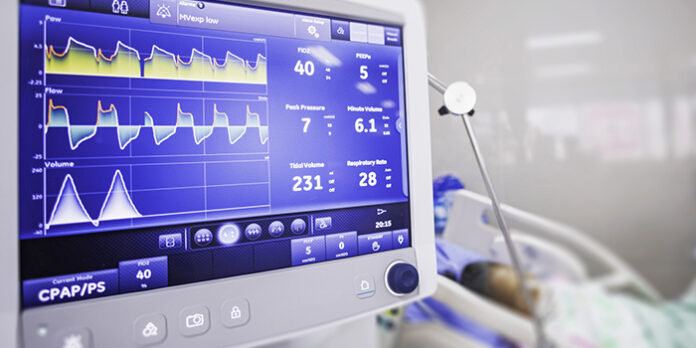A ventilator is a device that provides a patient who is unable to breathe or can only breathe partially mechanical or artificial breathing. Although there are many different types of ventilation, the two main types are invasive and non-invasive. Although non-invasive ventilation modalities have unique advantages, severe and emergency situations frequently necessitate invasive ventilation since it has been shown to have advantages over non-invasive ventilation. Major market participants are making significant R&D investments with the goal of creating and introducing cutting-edge critical care equipment.
The increased prevalence of chronic obstructive pulmonary disease (COPD) and other respiratory disorders such sleep apnea, acute lung injury, and hypoxemia are the most significant factors affecting the growth of this market. It is also anticipated that the market’s overall growth will be accelerated by the rising rate of preterm births and the rapidly expanding geriatric population. The high incidence of tobacco use, which causes respiratory diseases, will further support the market’s expansion.
A Strategic National Stockpile (SNS) and around 98,000 non-full-featured ventilators are used to facilitate this. With this addition, there are now roughly 200,000 ventilation-capable devices in the United States. However, if the COVID-19 virus spreads as predicted in the United States, according to the various figures, 4.8 million patients will need to be hospitalized in 2020. In addition, 1.9 million COVID-19 patients would need to be admitted to the ICU, and 960,000 of them would eventually need mechanical breathing in the United States. Given the far lesser number of devices accessible, managing this number of patients would be extremely difficult for the nation. This has also contributed to an increase in demand for home healthcare restorative equipment such ventilators and others.
Globally, the burden of respiratory disorders is increasing as a result of a number of causes including smoking, obesity, and changes in lifestyle. The Regents of the University of California report that every year, there are about 4 million ICU admissions in the United States. Each year, around 2.1 million patients are hospitalized to ICUs in Germany, of whom 42.0% are thought to need mechanical breathing.
By Interface ventilator types:
- Invasive
- Non invasive
Invasive: In high-pressure oxygen or air sources, controlled temperature and humidity of the environment, and availability of technical staff to perform troubleshooting protocols, Provision must also be made in terms of the following infrastructure, particularly to for decontamination procedures and to maintain the equipment.
Non invasive: Health professionals must follow infection control procedures to lower the risk of contracting COVID-19 through the generation of aerosols when using non-invasive ventilators, primarily continuous positive airway pressure (CPAP), bilevel positive airway pressure (BPAP), and high-flow oxygen systems. These procedures include wearing respirators and taking airborne precautions.
Types of Ventilators:
- face mask ventilators
- mechanical ventilators
- manual resuscitator bags
- tracheostomy ventilators
Face mask ventilators are non-invasive, compared to mechanical and tracheostomy ventilators need a neck incision and use tubes that a doctor inserts into the trachea, or windpipe, to function. Medical professionals refer to this procedure as “intubation”.
Intended uses of ventilators:
- Patient ventilators for intensive care unit
- Patient ventilators for transport/mass-casualty care
Risks of using ventilators:
atelectasis, this takes place when the lungs do not fully inflate, lowering the amount of oxygen that enters the bloodstream.
Lung injury that can be brought on by high air pressure or high oxygen levels is known as aspiration, which is defined as breathing objects or fluids into the airways, such as saliva.
pulmonary edema, this happens when fluid accumulates inside the lungs’ air sacs.
pneumothorax, this occurs when air escapes from the lungs into the area right outside of them, causing discomfort, shortness of breath, and — in some circumstances — full lung collapse infections, which can include sinus infections.
airway obstruction
Who needs a ventilator:
Ventilation is necessary when a person has respiratory failure. A person cannot breathe enough oxygen and cannot effectively evacuate carbon dioxide in this circumstance. This condition has the capacity to be lethal. A wide variety of injuries and illnesses, such as the following, can cause respiratory failure:
- Head injury
- Stroke
- Lung disease
- Spinal cord injury
- Polio
- Sudden cardiac arrest
- Neonatal respiratory distress syndrome
- Acute respiratory distress syndrome (ARDS)
- Pneumonia
- Sepsis
Regional Analyses:
North America currently holds the largest share of the global ventilator market due to the growing geriatric population, rising COVID-19 patient volume, high prevalence of smoking, high prevalence of respiratory diseases, highly developed healthcare system, and high healthcare expenditure, North America currently holds the largest share of the global ventilator market.
The Asia Pacific market is expected to grow significantly during the forecast period due to the rising COVID-19 cases, chronic respiratory diseases, rising healthcare costs, numerous collaborations, new product launches, and strategic agreements implemented by local players during the pandemic are all expected to contribute market’s significant growth during the forecast period. The CSIR-NAL created the non-invasive airway pressure ventilator known as Swasth Vayu.
Recent Development:
In April 2020, Medtronic acquired approval to use PB560 in the US under the FDA’s EUA authorization. Previously, the company distributed about 300 ventilators every week. To combat the epidemic, production was supposed to expand from 300 to 700 ventilators per week; by the end of June 2020, this number was anticipated to reach 1,000 ventilators per week.
In May 2021, VYAIRE MEDICAL, INC. contributed 500 oxygen concentrators, 100 bellavista ventilators, two CPAP/BIPAP and oxygen concentrators, five Vela ventilators, and two CPAP/BIPAP and oxygen concentrators to India in an effort to aid the country during the COVID-19 pandemic and to further establish its brand as a market leader in India.
The U.S. FDA approved a number of software programs for Servo-u and Servo-n ventilators, Getinge AB stated in April 2021. Additionally, the business got FDA approval for the US market for Servo-u MR. As a result, the company’s product line was expanded, and its brand was strengthened.
